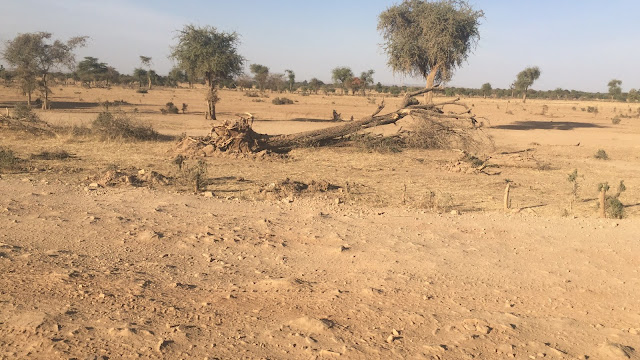The Thriving Potential Of The Land Restoration Market In Ecological Sustainability
 |
| Land Restoration Market |
The Land Restoration Market
represents a growing sector focused on reclaiming and rehabilitating degraded
lands. This market encompasses various approaches such as afforestation,
reforestation, soil remediation, and sustainable land management practices.
These activities aim to combat land degradation, desertification, and
deforestation while promoting biodiversity conservation and climate change
mitigation.
Land degradation affects over one-third of the Earth's
surface, posing severe consequences for both human well-being and environmental
stability. As agricultural expansion, urbanization, and industrial activities
intensify, vast areas of natural habitats and productive lands are lost or
damaged. Consequently, this threatens food security, water resources, and
exacerbates climate change impacts. Land restoration is not just an
environmental concern; it is an urgent necessity for global sustenance.
The Land Restoration Market
growth is primarily driven by a combination of factors. Governments and
international organizations worldwide are recognizing the importance of
ecological restoration and investing in restoration projects. The United
Nations' Decade on Ecosystem Restoration, launched in 2021, plays a pivotal
role in mobilizing global efforts to restore 350 million hectares of degraded
land by 2030.
Furthermore, private sector engagement in sustainable
practices is on the rise. Companies are acknowledging their responsibility to
mitigate their environmental impact and are participating in restoration
initiatives, which, in turn, enhances their reputation and attracts environmentally
conscious consumers.
The financial sector is also starting to embrace sustainable
investments, with an increasing number of funds dedicated to supporting land
restoration projects. This trend is driven by growing awareness among investors
about the potential risks posed by climate change and environmental
degradation.
The Land Restoration
Market not only contributes to environmental conservation but also delivers
numerous social benefits. As degraded lands are restored, rural communities
experience increased access to resources, improved livelihoods, and enhanced
resilience to climate-related shocks. Moreover, restoration projects often
involve community participation, empowering local populations to take ownership
of their land and ecosystem health.
Land restoration projects have proven to be economically
viable ventures. According to the World Resources Institute, investing $1 in
land restoration can yield a return of $9 in ecosystem services. These services
include improved crop yields, water purification, and carbon sequestration,
among others.



Comments
Post a Comment